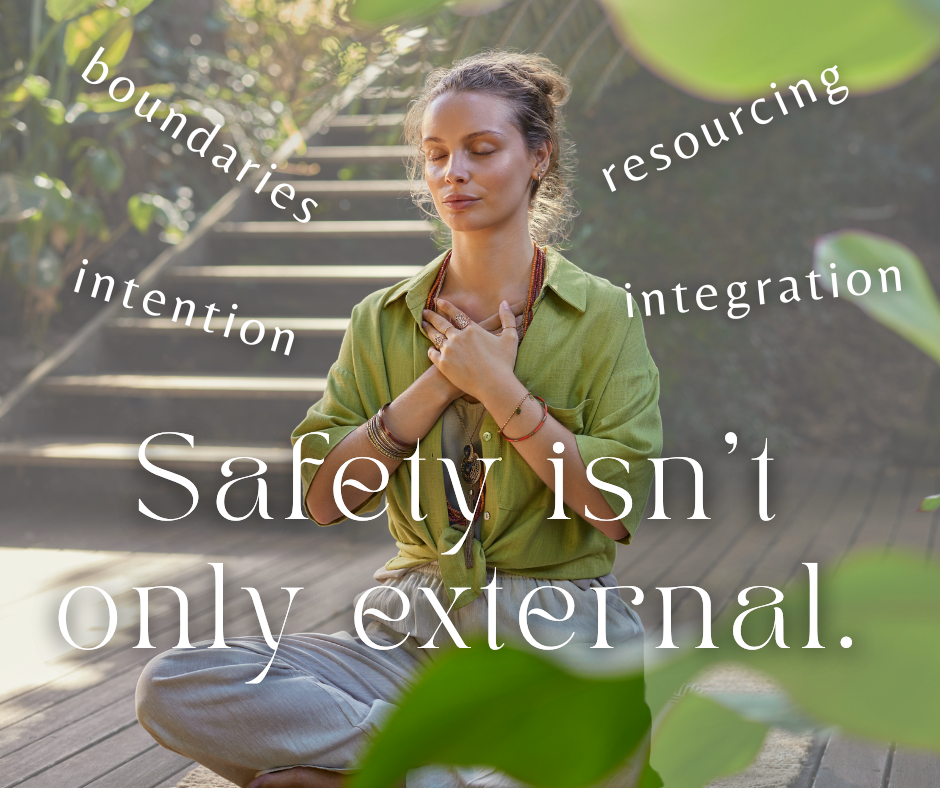Creating a safer space within - how to arrive and participate braver
An individual perspective
When we hear the phrase “safe space,” most of us think about what a facilitator can do to make a room welcoming (and you can read more on that in this post).
But there’s another piece that often goes unspoken: the space we create inside ourselves. Because the truth is, even in the most beautifully facilitated circle, we might not feel safe if our own nervous system is on high alert.
We’ve learned that cultivating a safer space within helps us step into group experiences with more courage and less overwhelm. Here are some practices that support that.
Arriving with Intention
Before you enter a space, pause. Notice: am I rushing? Am I carrying stress from the day?
If you don’t check in, you often tend to bring that activation into the group.
What can help:
Taking a few slow breaths with long exhales
Letting your eyes wander around the room and really see where you are
A short walk or shake-out before you log into Zoom or step into a workshop
This little ritual lets your body know: “You’re here now. It’s safe enough.”
Stretching the Window of Tolerance
Psychologist Dan Siegel calls it the window of tolerance - the zone where we can think, feel, and connect without being hijacked by fight, flight, or freeze. Your window isn’t static; it can grow when you practice stretching it.
You try to take small risks instead of huge leaps - maybe speaking once in a large group, rather than forcing yourself to share something deeply personal right away.
Notice if you have/experience early warning signs: racing thoughts, tension in your chest, or zoning out. These signals tell you to pause before you spiral.
With practice, you’ll find you can stay engaged longer, with less fear of tipping into overwhelm.
Gathering your resources
Bring tiny anchors with you: a stone you can hold, water to sip, a notebook for grounding. Maybe make sure you have a few quick techniques ready, like: placing a hand on your heart, taking a deep breath, a bathroom break, or stretching.Maybe even arrange a check-in with a friend afterward. Knowing these supports are available can make you feel more safe inside and therefore be a little braver.
Boundaries and brave intentions
This is another suggestion: before an event, set two things:
What I’m willing to share (#1) and one brave step I’d like to take (#2).
That might be contributing to a group discussion or staying present even when you feel slightly uncomfortable. Equally important: give yourself permission to step back if needed. Choosing when to say yes and when to say no is part of safety and healthy growth.
Integration - of underrated importance
Afterward, don’t just rush back into daily life. Maybe move your body, write down a reflection, spend time in nature or talk it through with someone. Celebrate small moments of bravery, because those moments add up and teach your nervous system: “See? We can do this!” or "What might have been dangerous in the past, is within my capacity to deal with now".
Why It Matters
Safety isn’t only external. When you arrive more resourced you not only feel steadier, you also contribute to the group’s collective safety.
Calm is contagious. When we each take responsibility for our own nervous system, we help weave a braver, more grounded space together.



